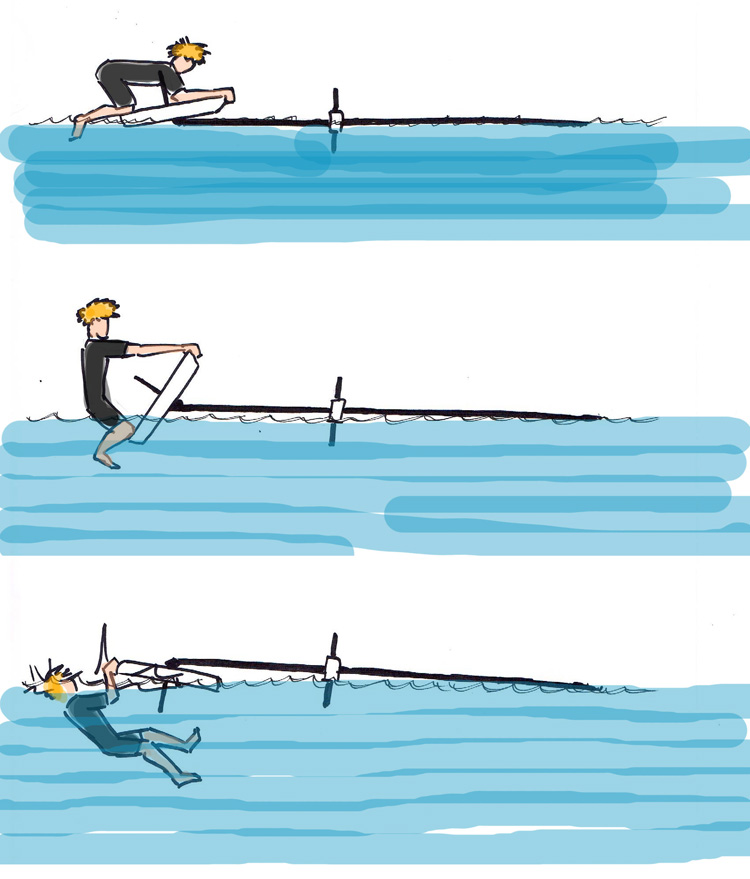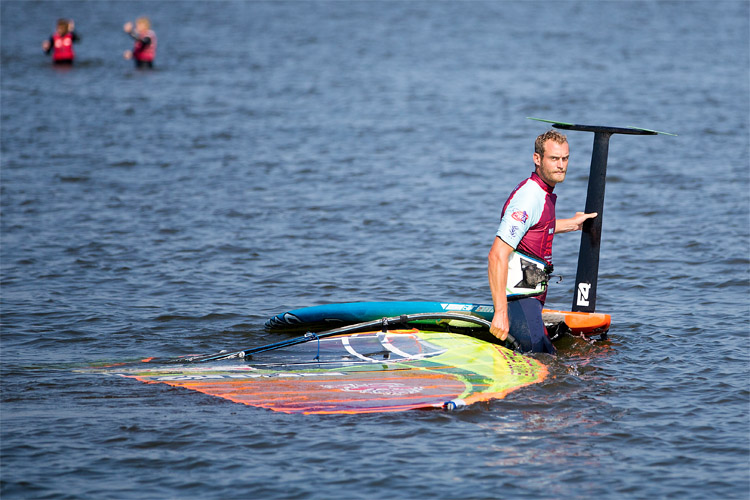It happens when you're learning to windsurf and when you wipe out and crash. Learn what to do when your windsurf board is turned upside down.
Imagine the following scenario: you're sailing for a couple of hours, and your confidence grows with each tack and jibe. Suddenly, the wind plays a trick on your sail, and you're catapulted into the water.
You realize you're tired, away from the shore, and your windsurfing gear is totally immersed in water. There's still work to be done - flipping the board over and then uphauling.
If you're an advanced windsurfer, the situation might not be new.
However, if you're still learning the basics of windsurfing and you're left alone in the open ocean - where choppy waters, tricky currents, and gusty winds rule - it may not be a comfortable moment.
That is why windsurfers must know how to flip a windsurf board, especially when the board is big and heavy.

Flipping Windsurf Boards 101
The trick is to solve the problem with the least amount of effort.
- Get the windsurf board at a 90-degree angle to the mast;
- Swim to the center of the flipped board, on the opposite side of the mast;
- Climb onto the bottom side of the board;
- Place your knees over the closest rail;
- Grab the farthest rail;
- Lean backward, and pull the board with your hand until it turns over completely;
Whenever possible, use the wind in your favor to help you flip the board. Another useful tip is never to flip the windsurf board while in the water.
So, don't push it upwards or try to rotate the board by grabbing the rails from the water - you will unnecessarily lose a lot of energy in the process.
